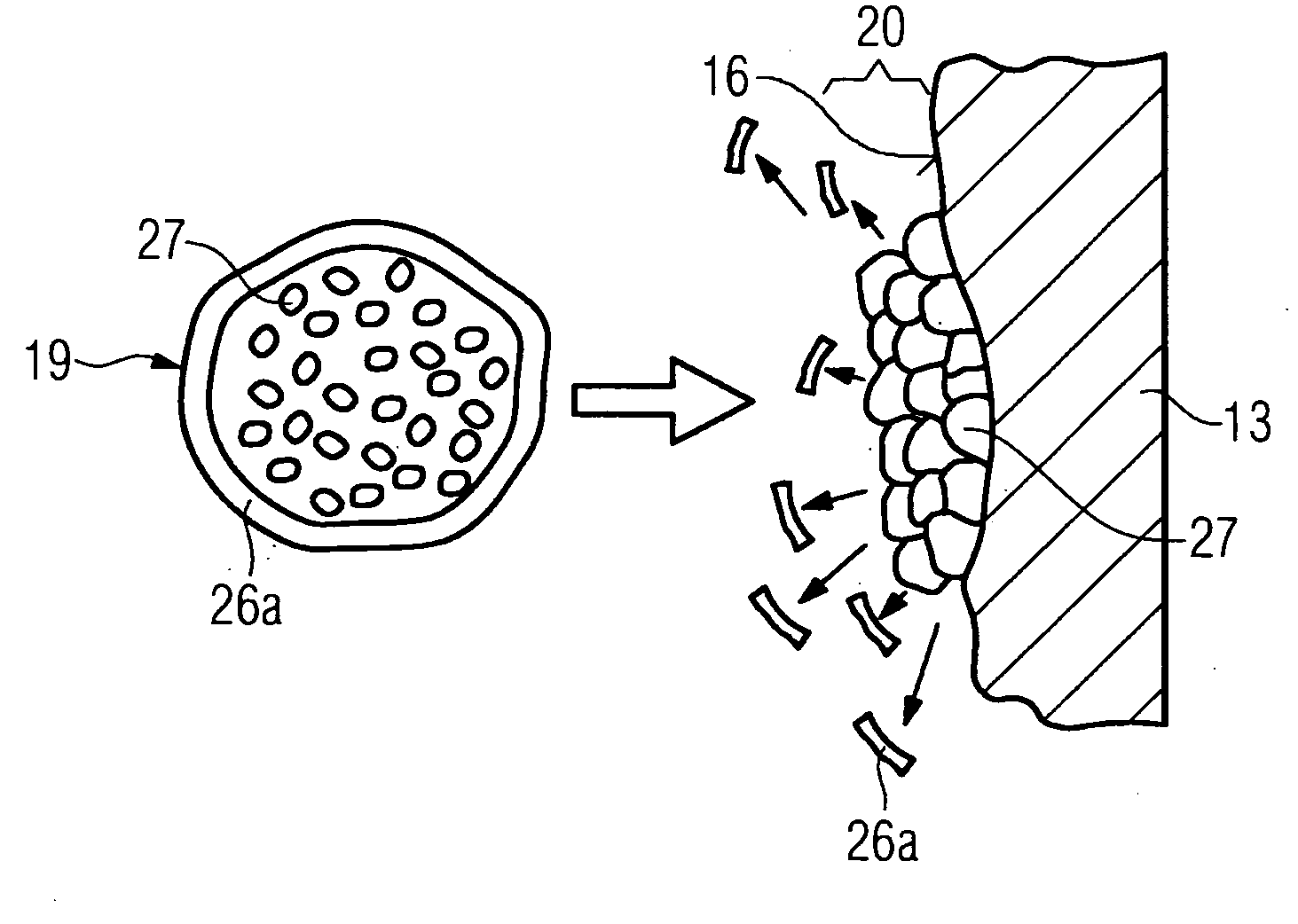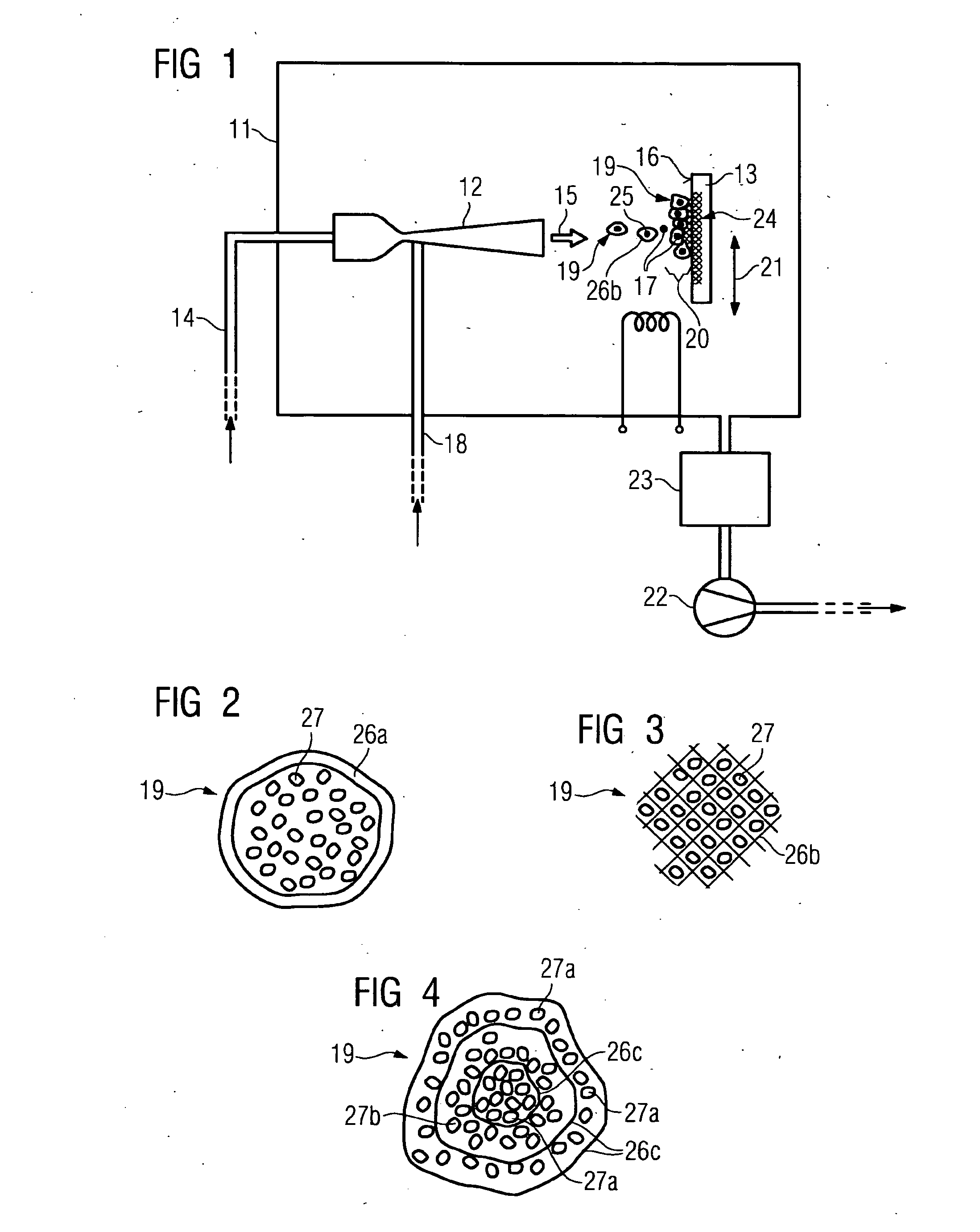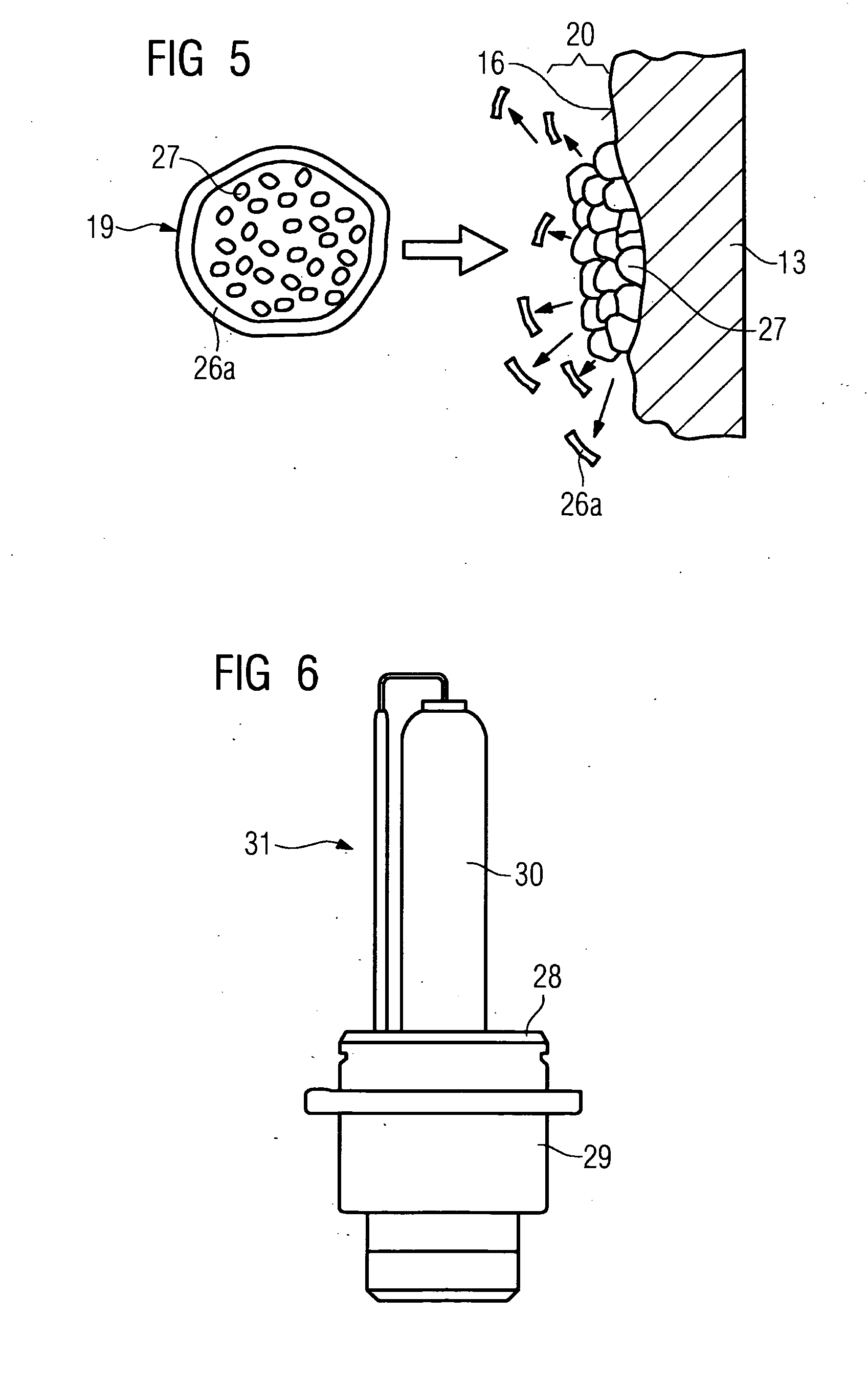Cold Gas Spraying Method
a technology of gas spraying and cold gas, which is applied in the direction of pretreatment surfaces, pressure inorganic powder coatings, coatings, etc., can solve the problems of limited use of thermal spraying, and achieve the effects of reducing possible stresses in the coating, reducing structural stresses, and good adhesion
- Summary
- Abstract
- Description
- Claims
- Application Information
AI Technical Summary
Benefits of technology
Problems solved by technology
Method used
Image
Examples
Embodiment Construction
[0026]FIG. 1 shows a coating tool for cold gas spraying. This has a vacuum chamber 11 in which are disposed on the one hand a cold spray nozzle 12 and on the other hand a substrate 13 requiring to the coated (retaining fixture not shown in further detail). A process gas can be fed to the cold spray nozzle through a first line 14. As indicated by the contour, the cold spray nozzle has a Laval shape which causes the process gas to expand and be accelerated toward a surface 16 of the substrate 13 in the form of a cold gas jet (arrow 15). The process gas can contain oxygen 17, for example, as the reactive gas, which is involved in a reaction at the surface 16 of the substrate 13. The process gas can also be heated (not shown), as a result of which a required process temperature can be set in the vacuum chamber 11.
[0027]Particles 19 can be fed to the cold spray nozzle 12 through a second line 18, which particles 19 are accelerated in the gas jet and strike the surface 16. The kinetic ene...
PUM
| Property | Measurement | Unit |
|---|---|---|
| particle sizes | aaaaa | aaaaa |
| energy | aaaaa | aaaaa |
| adhesion | aaaaa | aaaaa |
Abstract
Description
Claims
Application Information
 Login to View More
Login to View More - R&D
- Intellectual Property
- Life Sciences
- Materials
- Tech Scout
- Unparalleled Data Quality
- Higher Quality Content
- 60% Fewer Hallucinations
Browse by: Latest US Patents, China's latest patents, Technical Efficacy Thesaurus, Application Domain, Technology Topic, Popular Technical Reports.
© 2025 PatSnap. All rights reserved.Legal|Privacy policy|Modern Slavery Act Transparency Statement|Sitemap|About US| Contact US: help@patsnap.com



